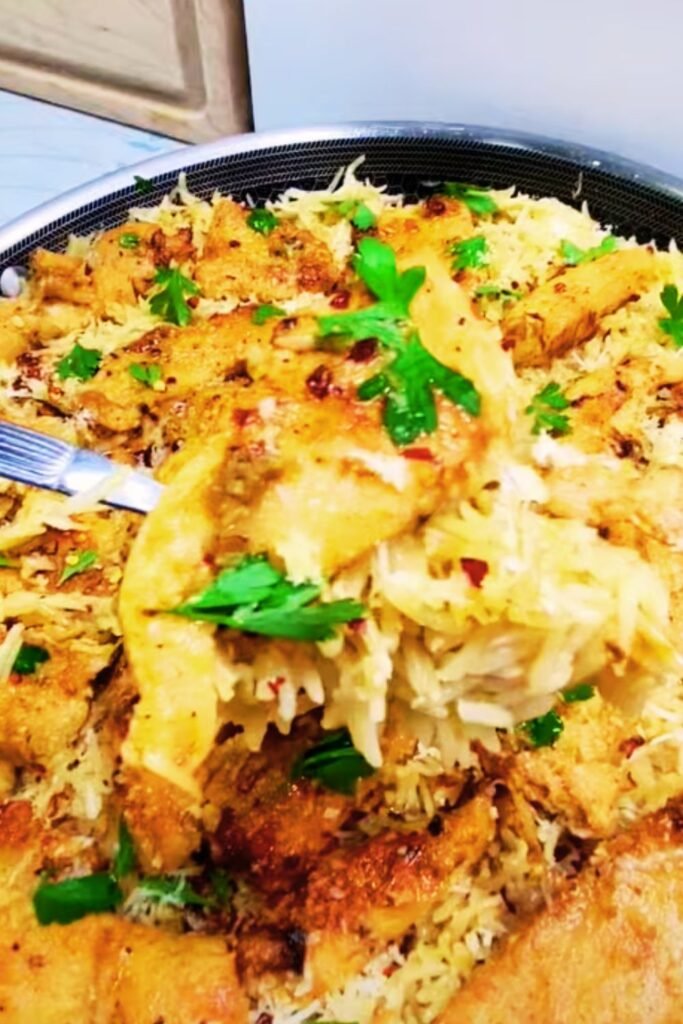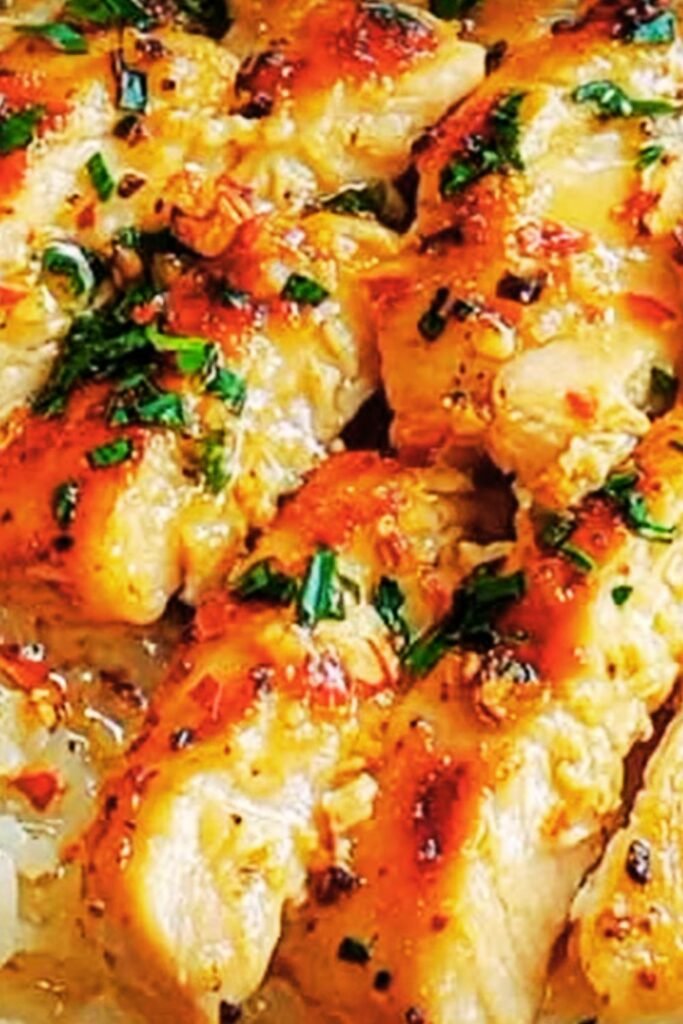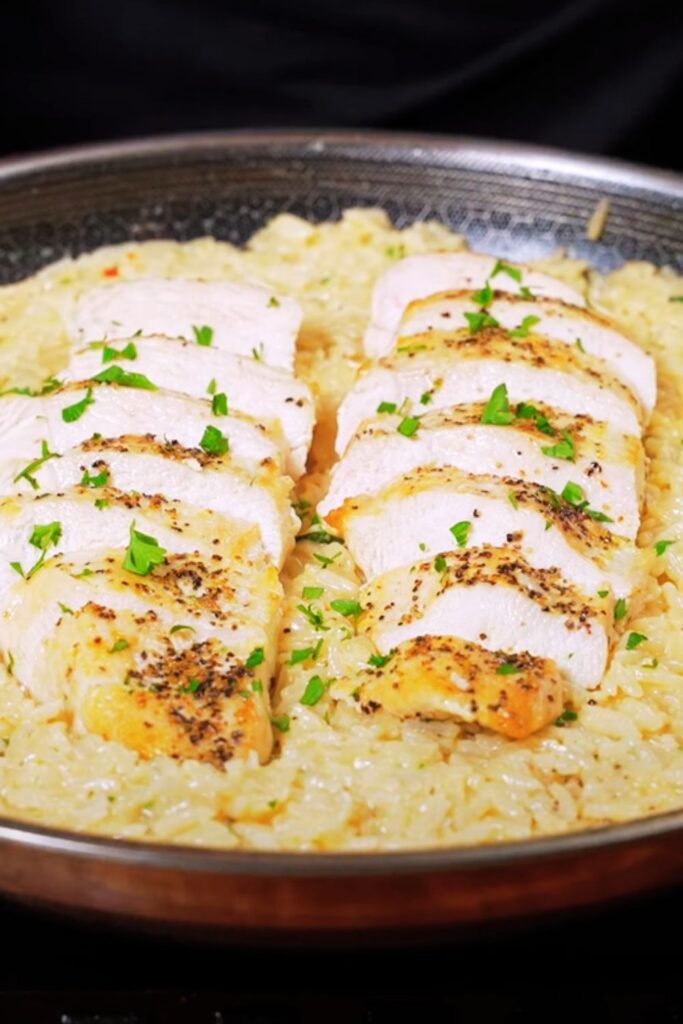I’ve been experimenting with rice dishes for over a decade, and I can confidently say that garlic parmesan rice has become my absolute favorite go-to side dish. There’s something magical about the way creamy parmesan cheese mingles with aromatic garlic and perfectly cooked rice grains. This isn’t just another boring side dish – it’s a flavor-packed accompaniment that can elevate any meal from ordinary to extraordinary.
When I first discovered this recipe, I was amazed at how such simple ingredients could create something so incredibly satisfying. The nutty richness of parmesan combined with the pungent warmth of garlic creates a symphony of flavors that makes even the pickiest eaters ask for seconds. What I love most about this dish is its versatility – it pairs beautifully with everything from grilled chicken to roasted vegetables, and it’s substantial enough to serve as a light main course.
What Makes Garlic Parmesan Rice Special
The beauty of garlic parmesan rice lies in its simplicity and the quality of its core ingredients. Unlike many complicated rice dishes that require exotic spices or hard-to-find ingredients, this recipe relies on pantry staples that most home cooks already have on hand. The magic happens when these humble ingredients come together through proper technique and timing.
Key Components:
- Long-grain white rice – Provides the perfect texture foundation
- Fresh garlic – Delivers aromatic depth and complexity
- Parmesan cheese – Adds creamy richness and umami flavor
- Butter – Creates silky texture and enhances flavor absorption
- Chicken or vegetable broth – Infuses the rice with savory depth
What sets this dish apart from plain rice is the layering of flavors. I start by sautéing minced garlic in butter until it becomes fragrant and golden, which creates an aromatic base that permeates every grain of rice. The parmesan cheese is added at the end, allowing it to melt gently and coat each grain without becoming stringy or clumpy.
Nutritional Benefits and Health Considerations
While garlic parmesan rice is undeniably delicious, I’m pleased to share that it also offers several nutritional benefits. Rice serves as an excellent source of carbohydrates for sustained energy, while parmesan cheese provides high-quality protein and calcium for bone health.
| Nutrient | Amount per Serving (1 cup) | % Daily Value |
|---|---|---|
| Calories | 285 | 14% |
| Carbohydrates | 45g | 15% |
| Protein | 8g | 16% |
| Fat | 8g | 12% |
| Calcium | 180mg | 18% |
| Iron | 2.1mg | 12% |
| Vitamin A | 245 IU | 5% |
| Sodium | 420mg | 18% |
The garlic in this recipe provides additional health benefits, including antioxidant properties and potential cardiovascular support. I always use fresh garlic rather than pre-minced varieties because fresh garlic contains higher levels of allicin, the compound responsible for many of garlic’s health benefits.
For those watching their sodium intake, I recommend using low-sodium broth and reducing the amount of added salt. The parmesan cheese naturally contains sodium, so you might find that you need less additional seasoning than you initially think.
Essential Ingredients and Shopping Tips

Selecting the right ingredients makes all the difference in achieving restaurant-quality results at home. I’ve learned through trial and error which specific products work best for this recipe.
Rice Selection: I always choose long-grain white rice, such as jasmine or basmati, for this recipe. These varieties have the perfect balance of starch content that creates fluffy, separate grains while still absorbing the garlic and cheese flavors beautifully. Short-grain rice tends to become too sticky, while brown rice, though nutritious, doesn’t absorb the flavors as effectively.
Garlic Quality: Fresh garlic bulbs should feel firm and heavy for their size, with tight, papery skin. I avoid bulbs with soft spots, green shoots, or those that feel light and hollow. For the best flavor, I mince the garlic myself rather than using pre-minced varieties from jars.
Parmesan Cheese: This is where I never compromise on quality. Freshly grated Parmigiano-Reggiano creates a completely different dish compared to pre-packaged grated cheese. The authentic cheese melts more smoothly and provides a richer, more complex flavor. Look for the distinctive dotted rind marking that indicates genuine Parmigiano-Reggiano.
Broth Considerations: I prefer using low-sodium chicken broth for its rich flavor, but vegetable broth works excellently for vegetarian versions. Avoid broths with excessive sodium content, as the parmesan cheese will add plenty of savory depth.
Step-by-Step Cooking Instructions
Creating perfect garlic parmesan rice requires attention to timing and technique. I’ve refined this method through countless preparations, and these steps consistently deliver exceptional results.
Preparation Phase:
- Measure 1½ cups of long-grain white rice and rinse it under cold water until the water runs clear
- Mince 4-6 cloves of fresh garlic (adjust based on your preference for garlic intensity)
- Grate ¾ cup of fresh parmesan cheese
- Measure 3 cups of broth and warm it slightly in a separate pot
Cooking Process:
Step 1: Create the Aromatic Base Heat 3 tablespoons of butter in a heavy-bottomed saucepan over medium heat. Once the butter melts and begins to foam, add the minced garlic. Sauté for 60-90 seconds until the garlic becomes fragrant and lightly golden. Be careful not to let it brown too much, as burnt garlic will create a bitter flavor.
Step 2: Toast the Rice Add the rinsed rice to the saucepan with the garlic butter. Stir continuously for 2-3 minutes until each grain is coated with the butter mixture and begins to turn slightly translucent. This toasting step adds depth to the final flavor and helps the rice absorb the liquid more evenly.
Step 3: Add Liquid and Seasonings Slowly pour in the warm broth while stirring gently. Add 1 teaspoon of salt and ½ teaspoon of freshly ground black pepper. The mixture will bubble vigorously at first – this is normal.
Step 4: Simmer to Perfection Bring the mixture to a gentle boil, then reduce the heat to low and cover the saucepan with a tight-fitting lid. Simmer for 18-20 minutes without lifting the lid. The rice should absorb most of the liquid and become tender.
Step 5: Final Touches Remove the saucepan from heat and let it rest, covered, for 5 minutes. This resting period allows the rice to finish cooking in its own steam. Remove the lid and fluff the rice gently with a fork. Gradually fold in the grated parmesan cheese, allowing it to melt and coat each grain evenly.
Cooking Techniques and Pro Tips

After years of perfecting this recipe, I’ve discovered several techniques that consistently produce superior results. These details make the difference between good garlic parmesan rice and truly exceptional garlic parmesan rice.
Temperature Control: Maintaining proper heat levels throughout the cooking process is crucial. I keep the heat at medium when sautéing garlic to prevent burning, then use medium-high heat when adding the broth to achieve the initial boil. Once I reduce the heat for simmering, I aim for the lowest setting that still maintains gentle bubbling.
Liquid Ratios: The standard rice-to-liquid ratio doesn’t always apply here because of the butter and cheese additions. I use slightly less broth (about 2:1 ratio instead of the typical 2.5:1) because the butter adds moisture and the cheese will release some liquid as it melts.
Stirring Strategy: I stir actively during the garlic sautéing and rice toasting phases but avoid stirring once the broth is added and the pot is covered. Excessive stirring during the simmering phase releases too much starch and creates gummy rice.
Cheese Integration: The timing of cheese addition is critical. I wait until the rice is fully cooked and slightly cooled before folding in the parmesan. This prevents the cheese from clumping or becoming stringy from excessive heat.
Flavor Variations and Customizations
One of the aspects I love most about garlic parmesan rice is how adaptable it is to different flavor profiles and dietary preferences. I’ve experimented with numerous variations over the years, and these modifications have become family favorites.
Herb Enhancement: Fresh herbs transform this dish into something restaurant-worthy. I particularly enjoy adding 2 tablespoons of chopped fresh parsley or basil just before serving. Dried Italian seasoning (1 teaspoon) added during the simmering phase creates a more complex flavor profile.
Protein Additions: For a heartier meal, I sometimes fold in cooked chicken pieces, crispy bacon bits, or sautéed mushrooms during the final cheese addition step. These proteins should be pre-cooked and seasoned before incorporating them into the rice.
Vegetable Integration: Diced bell peppers, cherry tomatoes, or spinach can be added to create a more complete dish. I sauté harder vegetables like peppers with the garlic, while delicate greens like spinach get folded in at the very end.
Spice Variations: A pinch of red pepper flakes added with the garlic creates a subtle heat that complements the creamy cheese beautifully. For those who enjoy more complex spicing, a small amount of smoked paprika adds depth without overwhelming the core flavors.
Serving Suggestions and Meal Pairings
Garlic parmesan rice serves as an excellent foundation for countless meal combinations. I’ve served this dish at family gatherings, dinner parties, and casual weeknight meals, and it never fails to impress.
Main Course Pairings: This rice pairs exceptionally well with grilled or roasted proteins. I particularly enjoy it alongside herb-crusted chicken breast, pan-seared salmon, or grilled pork tenderloin. The creamy, savory rice balances the smokiness of grilled meats perfectly.
Vegetarian Combinations: For vegetarian meals, I serve garlic parmesan rice with roasted vegetables, grilled portobello mushrooms, or a fresh caprese salad. The substantial nature of the rice makes it satisfying enough to serve as a main course with a side of steamed broccoli or green beans.
Presentation Ideas: I like to garnish individual servings with a sprinkle of freshly chopped parsley and an additional pinch of grated parmesan. For special occasions, I serve it in warmed bowls with a small wedge of lemon on the side – the citrus brightness provides a lovely contrast to the rich flavors.
Storage and Reheating Guidelines

Proper storage techniques ensure that leftover garlic parmesan rice maintains its flavor and texture for several days. I’ve developed reliable methods for keeping this dish delicious even after refrigeration.
Refrigeration Storage: Cooled garlic parmesan rice keeps well in the refrigerator for up to 4 days when stored in airtight containers. I always allow the rice to cool completely before refrigerating to prevent condensation that can make the rice mushy.
Reheating Methods: My preferred reheating method involves adding a tablespoon of broth or water to the rice and heating it gently in a covered saucepan over low heat, stirring occasionally. This method restores moisture and prevents the rice from drying out. Microwave reheating works in a pinch – I use 30-second intervals on medium power, stirring between intervals.
Freezing Considerations: While possible, I don’t recommend freezing garlic parmesan rice because the texture changes significantly upon thawing. The cheese tends to separate, and the rice can become mushy. If you must freeze it, use it within one month and expect some texture changes.
Troubleshooting Common Issues
Even experienced cooks occasionally encounter challenges with rice preparation. I’ve made every possible mistake with this recipe and learned how to prevent and fix common problems.
| Problem | Cause | Solution | Prevention |
|---|---|---|---|
| Mushy rice | Too much liquid or overcooking | Add breadcrumbs to absorb excess moisture | Use proper liquid ratios, don’t lift lid during cooking |
| Burnt bottom | Heat too high or inadequate stirring | Scrape unburnt rice to new pot, discard burnt portion | Use heavy-bottomed pan, maintain low heat |
| Clumpy cheese | Cheese added too hot or low-quality cheese | Stir in cold butter to smooth texture | Cool rice slightly before adding cheese |
| Bland flavor | Insufficient seasoning or poor-quality ingredients | Add salt, garlic powder, or extra parmesan | Taste and adjust seasonings throughout cooking |
| Sticky texture | Wrong rice type or too much stirring | Nothing can fix this batch | Use long-grain rice, minimal stirring during simmering |
Flavor Rescue Techniques: If the finished rice tastes bland, I stir in additional minced garlic that’s been quickly sautéed in butter, along with extra grated parmesan and a pinch of salt. Sometimes a squeeze of fresh lemon juice brightens the entire dish.
Q&A Section
Q: Can I use brown rice instead of white rice for this recipe? I’ve experimented with brown rice, and while it’s possible, the results are quite different. Brown rice requires about 45 minutes of cooking time instead of 20, and you’ll need an additional ½ cup of broth. The nutty flavor of brown rice competes with the garlic and parmesan, creating a different dish entirely. If you prefer brown rice for health reasons, I recommend reducing the garlic slightly and increasing the parmesan.
Q: What’s the best way to prevent the garlic from burning? Garlic burns quickly and becomes bitter when overcooked. I always use medium heat (never high) and watch the garlic carefully during the sautéing phase. The moment it becomes fragrant and lightly golden, I immediately add the rice to stop the cooking process. If you’re nervous about timing, you can remove the pan from heat temporarily while you add the rice.
Q: Can I make this recipe dairy-free? Creating a dairy-free version requires some creativity, but it’s definitely possible. I substitute the butter with olive oil or vegan butter, and replace the parmesan with nutritional yeast (about ¼ cup) for a similar umami flavor. Some people use dairy-free parmesan alternatives, though the melting properties won’t be identical to real cheese.
Q: How can I make this recipe in a rice cooker? Rice cookers work well for this recipe with slight modifications. I sauté the garlic and butter in a separate pan first, then add this mixture to the rice cooker along with the rice and broth. I use the standard white rice setting, then fold in the parmesan cheese once the cooking cycle completes. The texture won’t be quite as fluffy as stovetop preparation, but it’s still delicious.
Q: Why does my rice sometimes come out gummy or sticky? Gummy rice usually results from one of three issues: using the wrong type of rice, stirring too much during cooking, or using too much liquid. Always rinse your rice thoroughly before cooking to remove excess starch, use long-grain varieties, and resist the urge to lift the lid or stir during the simmering phase.
Q: Can I prepare this dish ahead of time for entertaining? I often prepare garlic parmesan rice a few hours ahead for dinner parties. I cook it completely, then keep it warm in a slow cooker on the “warm” setting with an additional tablespoon of broth to prevent drying. I add a final sprinkle of fresh parmesan just before serving to refresh the cheese flavor.
Q: What can I do if I accidentally add too much salt? Over-salted rice can sometimes be rescued by adding more cooked plain rice to dilute the saltiness. I keep a small batch of plain cooked rice in my freezer specifically for this purpose. Adding a small amount of sugar (just a pinch) can also help balance excessive saltiness, though this should be done sparingly.
Q: Is it necessary to use expensive parmesan cheese? While high-quality Parmigiano-Reggiano produces the best flavor, I understand it’s not always budget-friendly. A good compromise is using a mixture of half genuine parmesan and half good-quality domestic parmesan. Avoid pre-grated cheese in plastic containers, as it contains anti-caking agents that prevent smooth melting.
This garlic parmesan rice recipe has become one of my most requested dishes, and I hope it brings as much joy to your dinner table as it has to mine. The combination of simple ingredients, straightforward technique, and incredible flavor makes it a perfect addition to any home cook’s repertoire. Whether you’re preparing a casual family meal or entertaining guests, this versatile side dish never fails to impress.